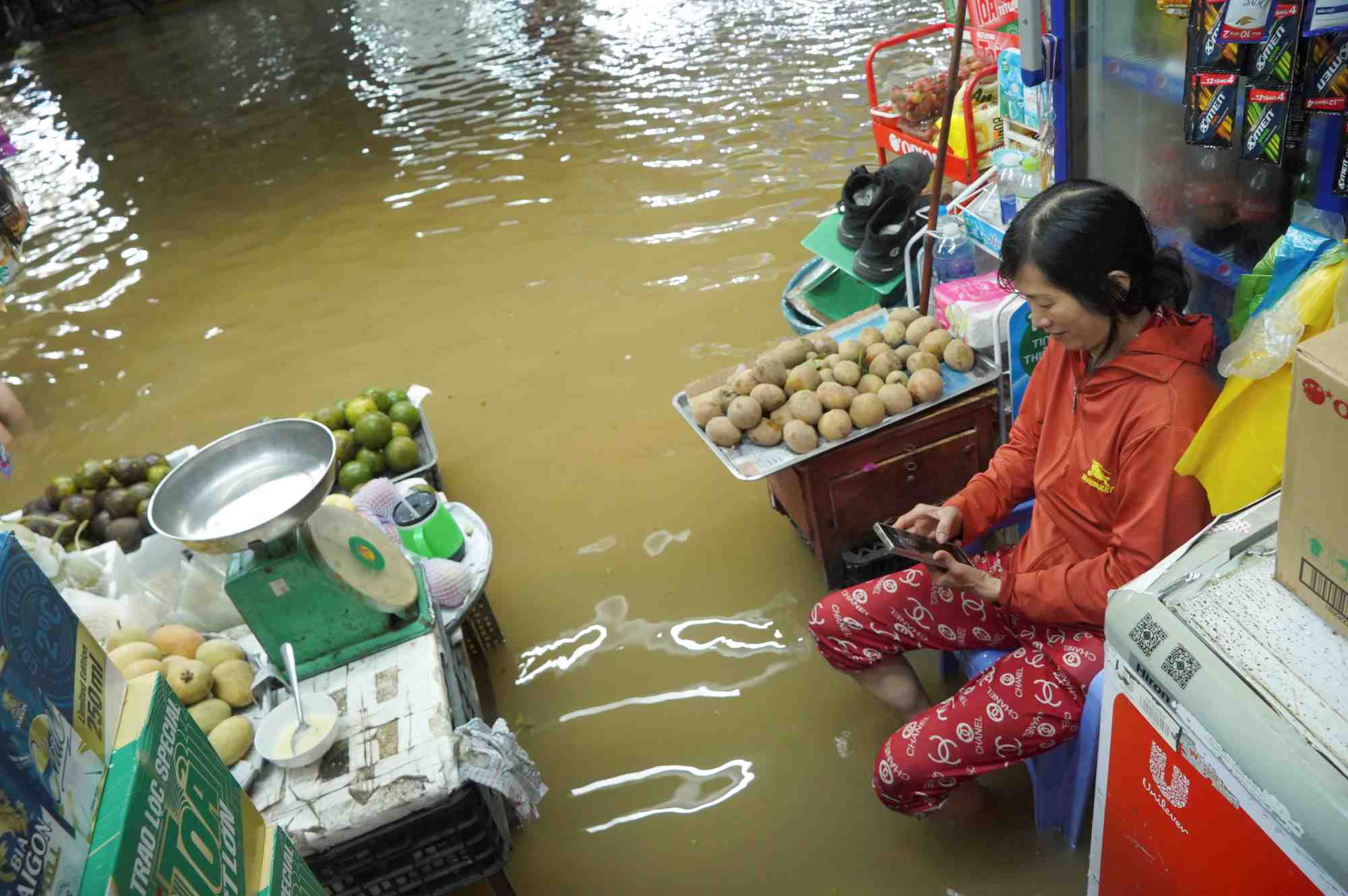Diker break in Con Son - dozens of hectares of crops and seafood are deeply flooded
In early November, the high tide on the Hau River rose unusually, with water levels in some places exceeding alert level III, causing local flooding on many roads and residential areas in the center as well as the outskirts of Can Tho city. The peak tide on November 6 recorded up to 2.35m, 35cm higher than the alarm level III - the highest level in many recent years.
In Con Son (Binh Thuy ward, Can Tho city), at around 4am on November 6, a section of the dike suddenly broke, about 5m wide and 10m long. Water from the river flooded in at a very fast speed, leaving people unable to react.
Mr. Mai Hong Su - Secretary and Head of Area 17 - said that the incident caused 8 houses and 5 hectares of fruit and vegetable gardens to be deeply flooded; many fish ponds were swept away by water, causing great damage. According to Mr. Su, the broken dike section is outside the closed dike system invested by the city, reinforced by the people during the flood season.
Immediately after the incident, the Binh Thuy ward government coordinated with the Irrigation Department and relevant agencies to mobilize forces and materials to urgently overcome the situation.
Mr. Luong Si Nam - Vice Chairman of Binh Thuy Ward People's Committee - said that the dike section has been temporarily reinforced and safety has been ensured. The locality also reviewed the entire dyke system in Con Son, detected 2-3 vulnerable sections and promptly overcame them according to the motto "four on-site" and "three ready" to proactively respond to the next high tides.
In My Phuoc commune, the flooding situation is also complicated, Mr. Tran Ngoc Giang Nam - Vice Chairman of the Commune People's Committee - said that the high tide this year is much higher than previous years, causing all 13/13 hamlets to be affected. Many rural traffic routes were deeply flooded, some households in low-lying areas had to move their assets, and some places had water flooding into their houses.

Strengthening response and improving flood prevention systems
According to Mr. Mai Hoang Tam - Deputy Head of the Irrigation Department (Department of Agriculture and Environment of Can Tho City), the unit is closely monitoring the development of hydrometeorology, especially the high tide situation. The specialized agency recommends that people proactively protect production, especially fruit gardens and aquaculture ponds along the river. For dykes at risk of landslides or being overflowed, localities need to urgently repair them.
The leader of the Department of Construction of Can Tho City stated that in the face of extreme weather, rising sea levels and the impact of climate change, flooding in Can Tho tends to be increasingly serious. The Department is dredging, maintaining drainage systems, and repairing and replacing water intake gates on roads that are often flooded in the central area.
The Department coordinated with the Center for Construction Technology Application Research (University of Technology) to develop a flood forecast project for the city center, in order to propose appropriate solutions. Currently, Can Tho's flood prevention project focuses on protecting the core area from Hoa Binh - Nguyen Trai - Cach Mang Thang Tam Street - Alley 91 - National Highway 91B - 30/4 Street - Hoa Binh. However, some local locations such as the Can Tho river embankment (Hai Ba Trung street) have not yet reached the flood prevention level.
The Department of Construction said that it will continue to research and advise the City People's Committee on appropriate technical solutions to effectively respond to flooding in the central core area.
According to statistics from the Department of Crop Production and Plant Protection, the whole city of Can Tho currently has more than 4,280 hectares of crops flooded due to high tides, of which fruit trees account for the largest area with 3,842 hectares, the rest are rice and vegetables. Thanks to people proactively pumping water, no major damage to crops has been recorded, but many aquaculture areas are still affected.











